Accept all cookies Accept only essential cookies See our Cookie Notice

About ESA
The European Space Agency (ESA) is Europe’s gateway to space. Its mission is to shape the development of Europe’s space capability and ensure that investment in space continues to deliver benefits to the citizens of Europe and the world.
Highlights
ESA - United space in Europe
This is ESA ESA facts Member States & Cooperating States Funding Director General Top management For Member State Delegations European vision European Space Policy ESA & EU Space Councils Responsibility & Sustainability Annual Report Calendar of meetings Corporate newsEstablishments & sites
ESA Headquarters ESA ESTEC ESA ESOC ESA ESRIN ESA EAC ESA ESAC Europe's Spaceport ESA ESEC ESA ECSAT Brussels Office Washington OfficeWorking with ESA
Business with ESA ESA Commercialisation Gateway Law at ESA Careers Cyber resilience at ESA IT at ESA Newsroom Partnerships Merchandising Licence Education Open Space Innovation Platform Integrity and Reporting Administrative Tribunal Health and SafetyMore about ESA
History ESA Historical Archives Exhibitions Publications Art & Culture ESA Merchandise Kids Diversity ESA Brand Centre ESA ChampionsLatest
Space in Member States
Find out more about space activities in our 23 Member States, and understand how ESA works together with their national agencies, institutions and organisations.
Science & Exploration
Exploring our Solar System and unlocking the secrets of the Universe
Go to topicAstronauts
Missions
Juice Euclid Webb Solar Orbiter BepiColombo Gaia ExoMars Cheops Exoplanet missions More missionsActivities
International Space Station Orion service module Gateway Concordia Caves & Pangaea BenefitsLatest
Space Safety
Protecting life and infrastructure on Earth and in orbit
Go to topicAsteroids
Asteroids and Planetary Defence Asteroid danger explained Flyeye telescope: asteroid detection Hera mission: asteroid deflection Near-Earth Object Coordination CentreSpace junk
About space debris Space debris by the numbers Space Environment Report In space refuelling, refurbishing and removingSafety from space
Clean Space ecodesign Zero Debris Technologies Space for Earth Supporting Sustainable DevelopmentLatest
Applications
Using space to benefit citizens and meet future challenges on Earth
Go to topicObserving the Earth
Observing the Earth Future EO Copernicus Meteorology Space for our climate Satellite missionsCommercialisation
ESA Commercialisation Gateway Open Space Innovation Platform Business Incubation ESA Space SolutionsEnabling & Support
Making space accessible and developing the technologies for the future
Go to topicBuilding missions
Space Engineering and Technology Test centre Laboratories Concurrent Design Facility Preparing for the future Shaping the Future Discovery and Preparation Advanced Concepts TeamSpace transportation
Space Transportation Ariane Vega Space Rider Future space transportation Boost! Europe's Spaceport Launches from Europe's Spaceport from 2012Latest

ExoMars locomotion tests
Thank you for liking
You have already liked this page, you can only like it once!
Before Rosalind Franklin the ExoMars rover can search for signs of life on Mars, it must learn how to manoeuvre the landscape. Scientists and engineers are putting the rover through a series of locomotion tests to fine tune how it will respond to a challenging martian terrain.
The ExoMars mission will see Rosalind the rover and its surface platform land on Mars in 2021. There, the rover will move across many types of terrain, from fine-grained soil to large boulders and slopes to collect samples with a 2-m-long drill, and analyse them with instruments in its onboard laboratory. Engineers must ensure Rosalind does not get stuck in sand or topple over and that it is able to climb steep slopes and overcome rocks.
The ExoMars teams are using a dedicated rover to run locomotion tests. In this image, the full-sized locomotion model is about to move from the surface platform. This rover has been designed to behave exactly like Rosalind would do under martian gravity – that is about a third of gravity found on Earth. For that purpose, the model has a different weight distribution and features a boom mounted on top to achieve the exact location of the centre of gravity of the rover.
A special facility at RUAG Space in Zurich, Switzerland, emulates all the terrain conditions that Rosalind the rover is expected to encounter on Mars: different types of soil, various obstacle shapes and sizes and all kind of terrain slopes. A large hydraulic platform filled with 20 tonnes of soil was put in place for the tests.
Over the past few weeks, ESA, Roscosmos, Thales, Airbus and RUAG engineers have been testing the capability of the rover to egress from its landing platform onto the martian soil. Should the platform and rover find themselves on a slope upon landing, as simulated in the image, Rosalind the rover must be able to negotiate steep inclinations to descend from the platform. The team looked closely at the performance of the rover over the ramps at different inclination angles, from 5 up to 35 degrees.
The steep slope was a challenge for the rover. The wheels found it difficult at times to gain traction, a valuable lesson of what can be expected on Mars.
The rover has six wheels. Each wheel pair is suspended on a pivoted bogie so each wheel can be steered and driven independently. Its flexible metallic wheels, equipped with springs, offer great traction capability, allowing the rover to achieve better grip during obstacle climbing and achieve smoother locomotion.
Thanks to a triple-bogie locomotion system, the rover is able to overcome obstacles as big as its wheels. The rover uses inclinometers and gyroscopes to enhance its motion control.
Two cameras at the top of the rover’s mast allow Rosalind Franklin to see in 3D, like humans do, and identify rocks and slopes in front of it. This also allows the navigation system to take account of, and correct for, any wheel slippage. Rovers on Mars have previously been caught in sand, and continued wheel turning might actually dig them deeper – just like a car stuck in mud or snow.
These tests took place at the same time as the ExoFit field tests. In the most recent campaign, the rover drove from its landing platform and targeted sites of interest to sample rocks in the Mars-like landscapes of the Chilean desert.
-
CREDIT
ESA -
LICENCE
ESA Standard Licence
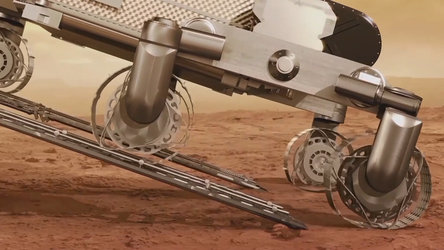
ExoMars – Testing locomotion
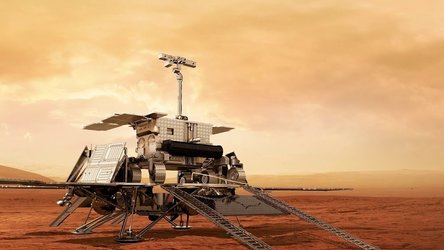
ExoMars – Moving on Mars
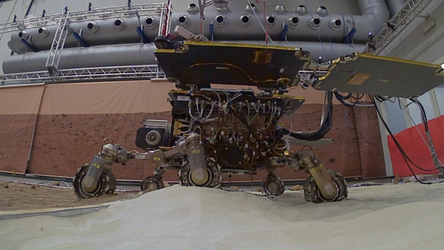
Rover escapes from sand trap
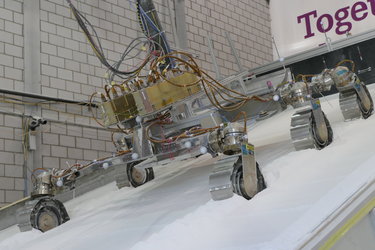
ExoMars wheel-walking
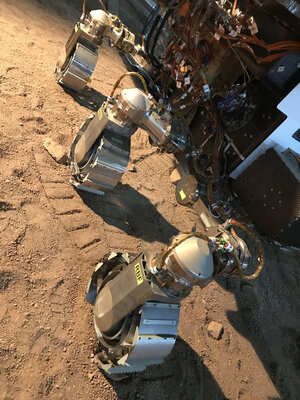














 Germany
Germany
 Austria
Austria
 Belgium
Belgium
 Denmark
Denmark
 Spain
Spain
 Estonia
Estonia
 Finland
Finland
 France
France
 Greece
Greece
 Hungary
Hungary
 Ireland
Ireland
 Italy
Italy
 Luxembourg
Luxembourg
 Norway
Norway
 The Netherlands
The Netherlands
 Poland
Poland
 Portugal
Portugal
 Czechia
Czechia
 Romania
Romania
 United Kingdom
United Kingdom
 Slovenia
Slovenia
 Sweden
Sweden
 Switzerland
Switzerland
























